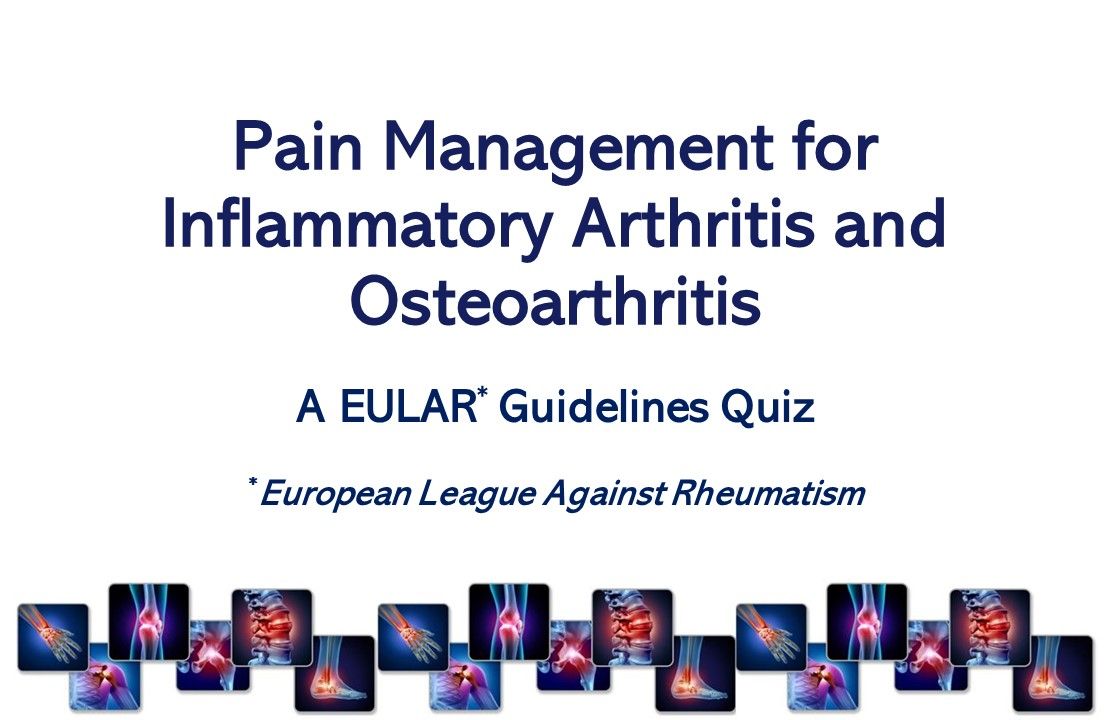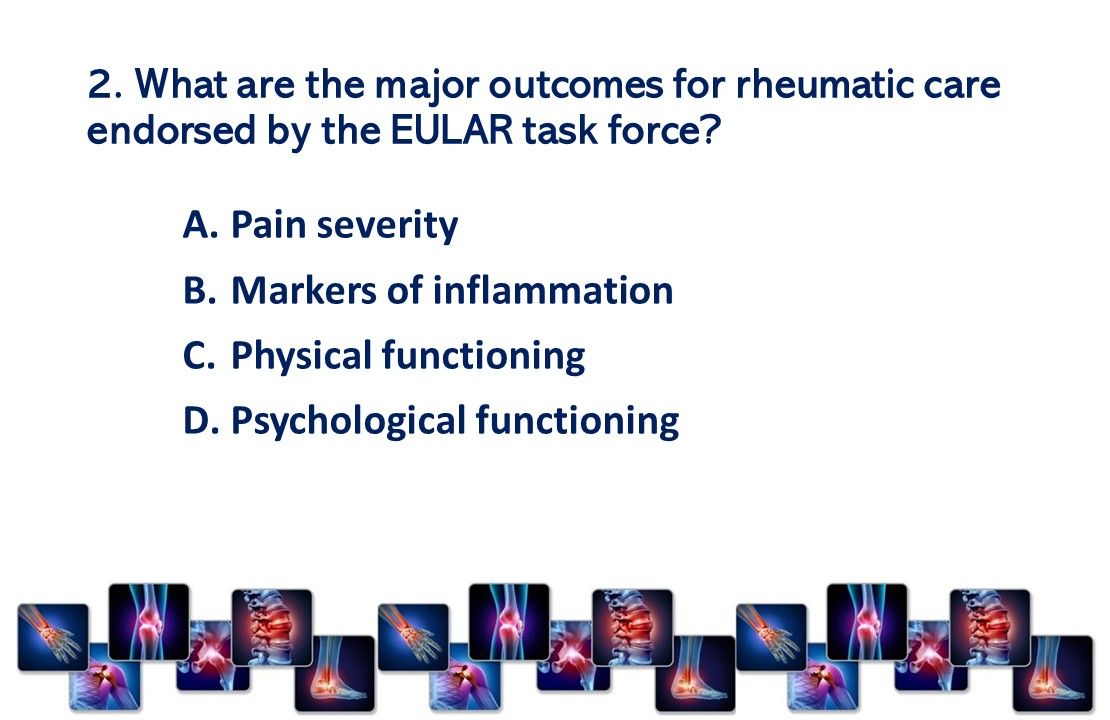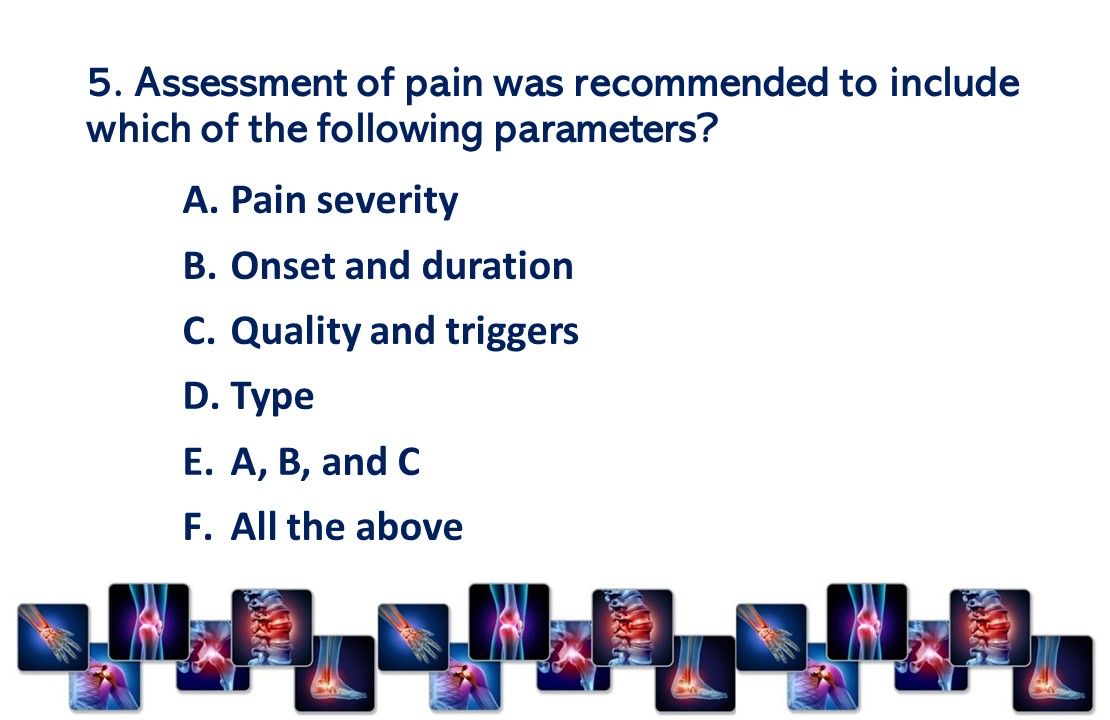© 2025 MJH Life Sciences™ , Patient Care Online – Primary Care News and Clinical Resources. All rights reserved.
Pain Management for Osteoarthritis: A 6-question Quiz
Opioids or opiate-like analgesics? Weight loss, exercise, or orthotics? Sleep interventions or cognitive therapy? What works for OA pain and what's the evidence?
Recommendations from the European League Against Rheumatism on management of pain from inflammatory and osteoarthritis are similar to those published jointly by The American College of Rheumatology and the Arthritis Foundation.
If you're current on the latter then you will probably do well on this quick 6-question quiz on the former. Good luck.

1. Other than pathological processes, such as inflammation and tissue damage, which factors contribute to pain from osteoarthritis?
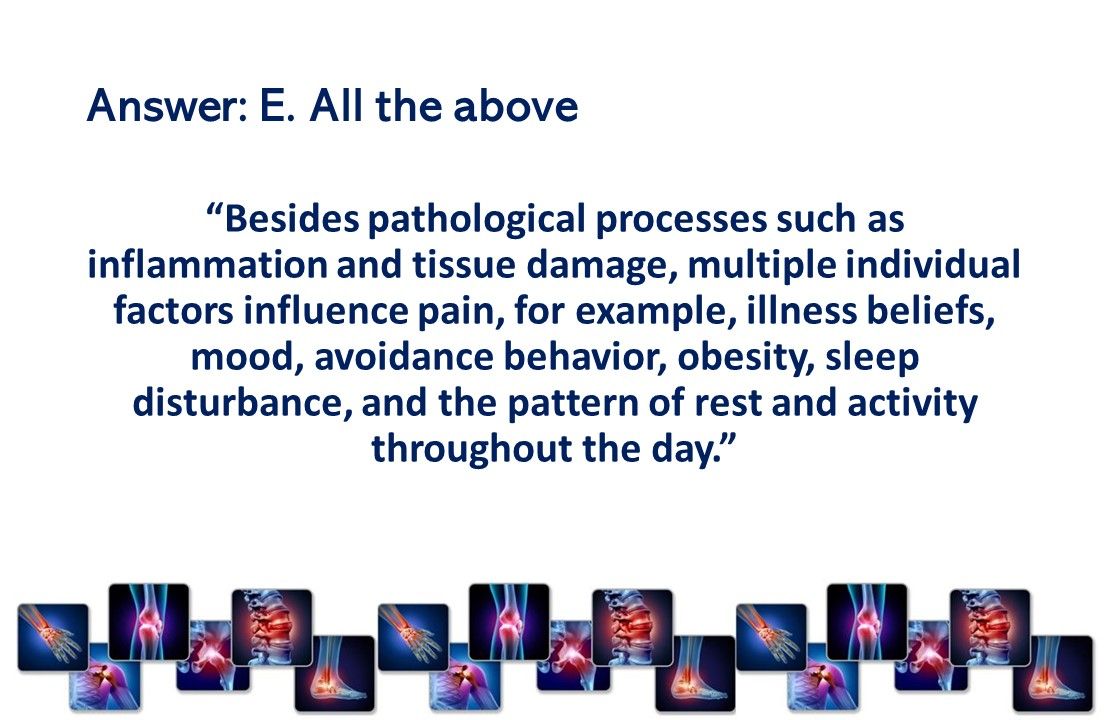
Answer: All the above. “Besides pathological processes such as inflammation and tissue damage, multiple individual factors influence pain, for example, illness beliefs, mood, avoidance behavior, obesity, sleep disturbance, and the pattern of rest and activity throughout the day.”
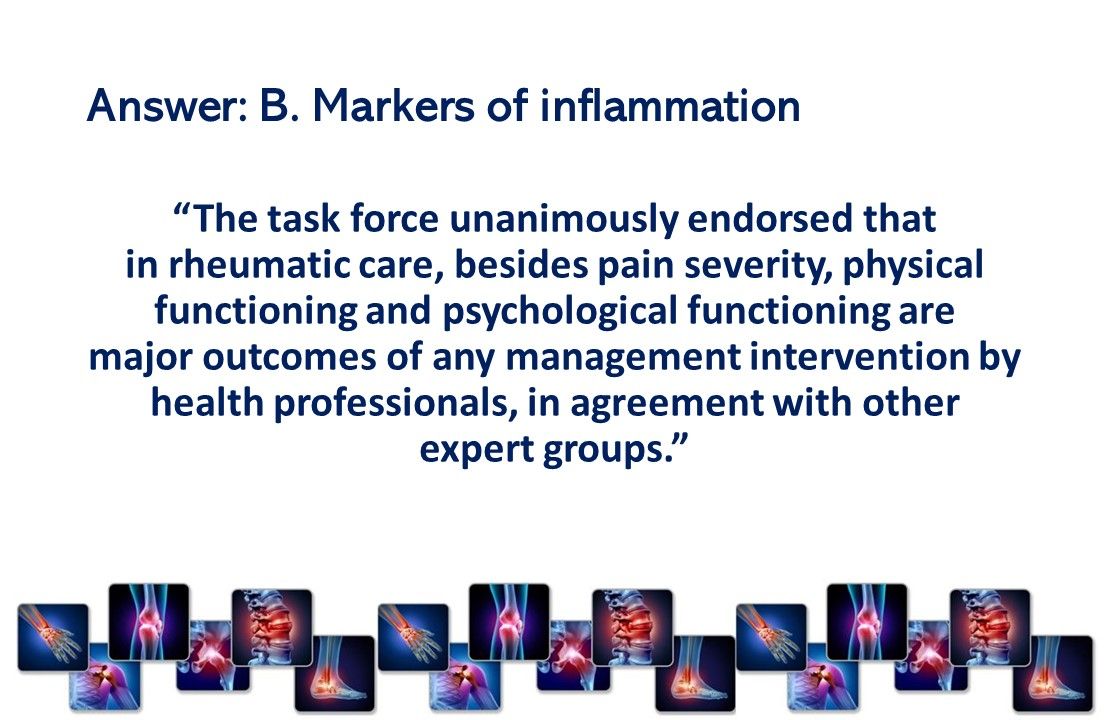
Answer: B. Markers of inflammation. “The task force unanimously endorsed that in rheumatic care, besides pain severity, physical functioning and psychological functioning are major outcomes of any management intervention by health professionals, in agreement with other expert groups.”
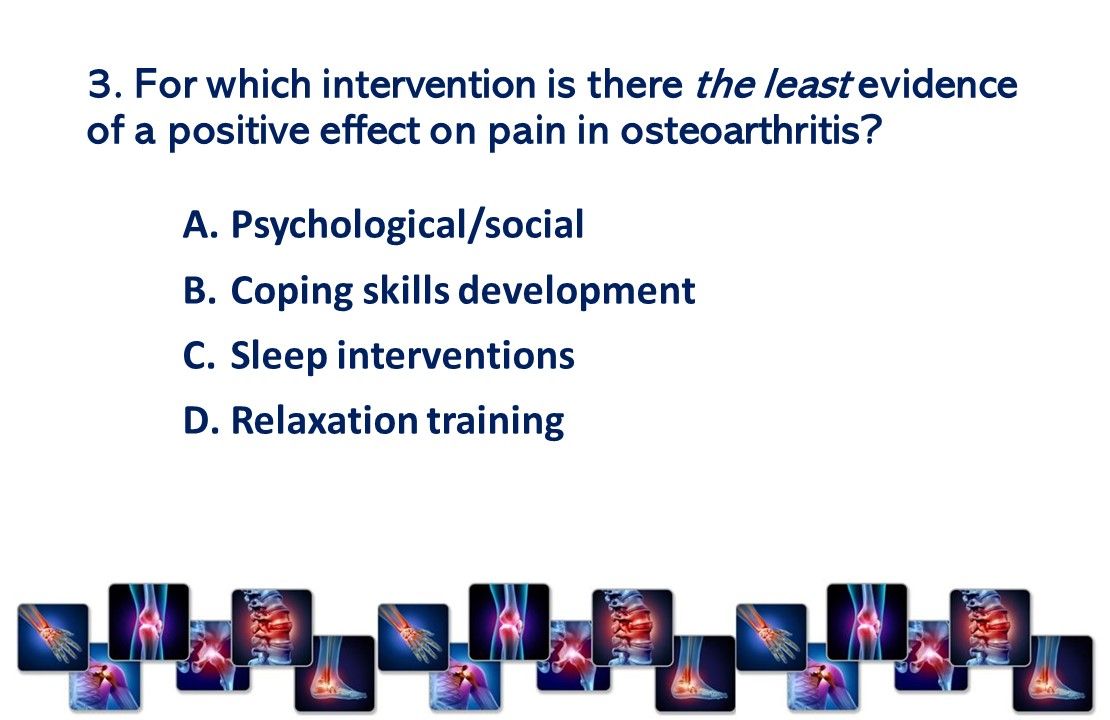
3. For which intervention is there the least evidence of a positive effect on pain in osteoarthritis?
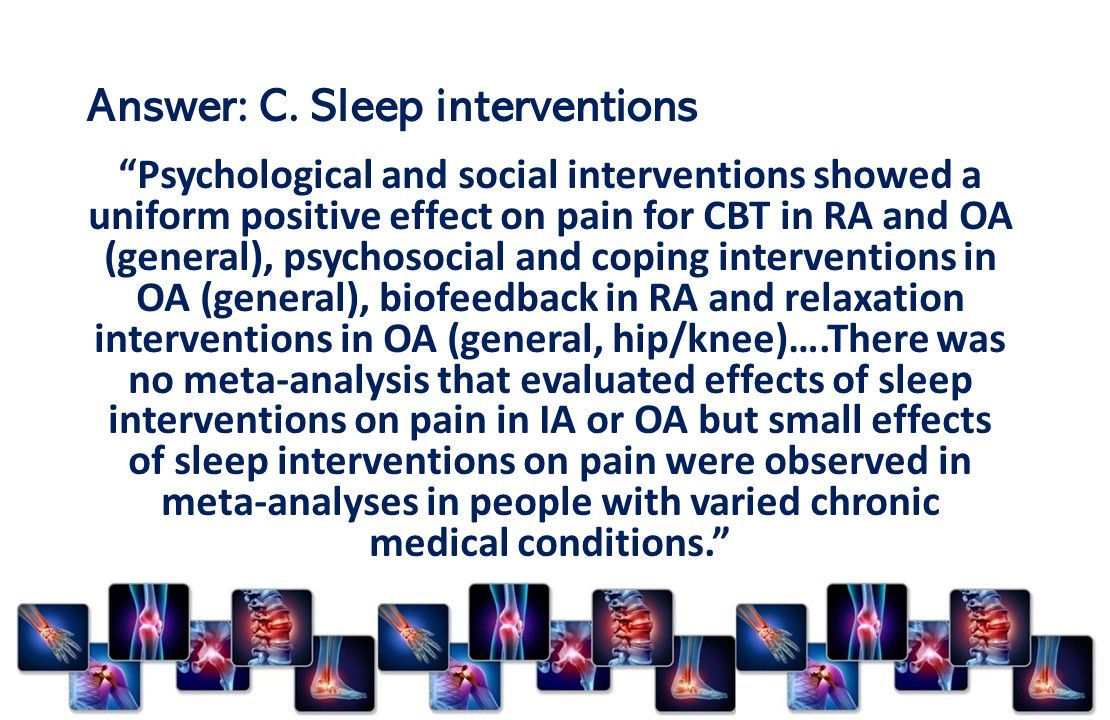
Answer: Sleep interventions. “Psychological and social interventions showed a uniform positive effect on pain for CBT in RA and OA (general), psychosocial and coping interventions in OA (general), biofeedback in RA and relaxation interventions in OA (general, hip/knee)….There was no meta-analysis that evaluated effects of sleep interventions on pain in IA or OA but small effects of sleep interventions on pain were observed in meta-analyses in people with varied chronic medical conditions.”
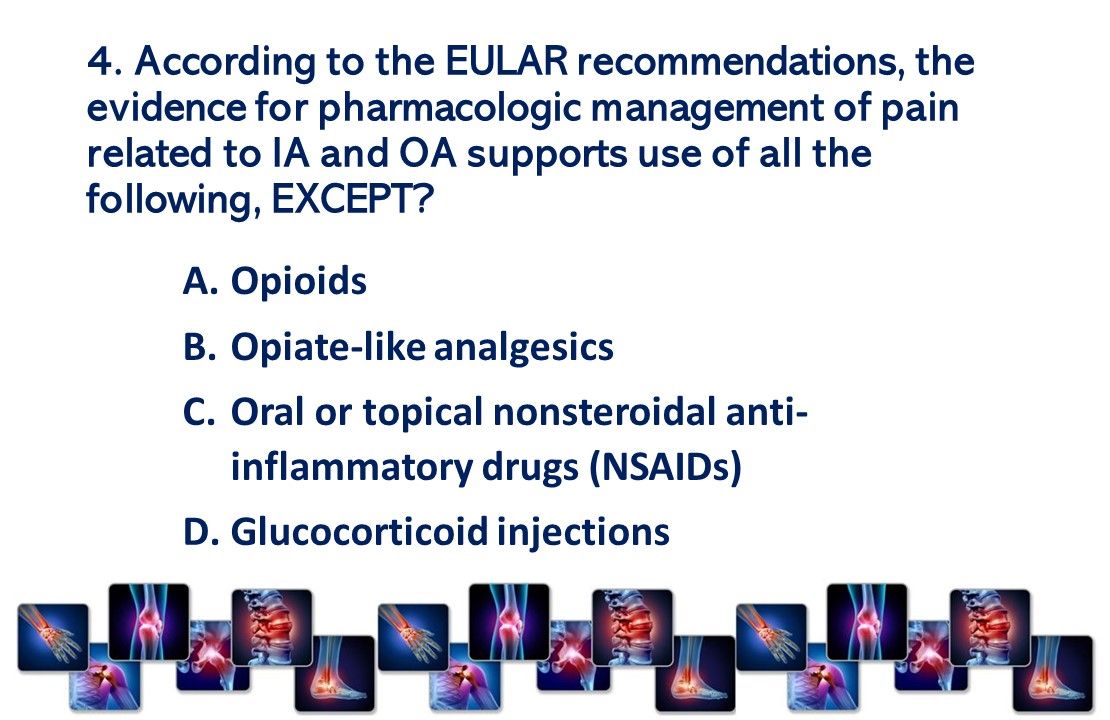
4. According to the EULAR recommendations, the evidence for pharmacologic management of pain related to IA and OA supports use of all the above, EXCEPT?
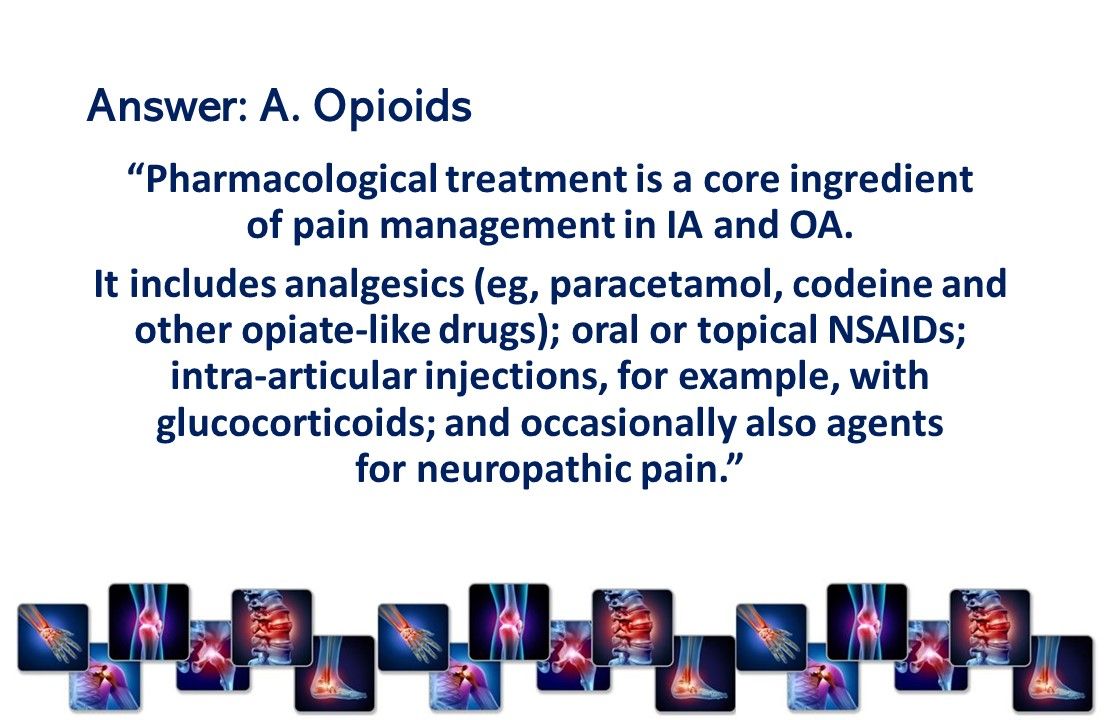
Answer: A. Opioids. “Pharmacological treatment is a core ingredient
of pain management in IA and OA. It includes analgesics (eg, paracetamol, codeine and other opiate-like drugs); oral or topical NSAIDs; intra-articular injections, for example, with glucocorticoids; and occasionally also agents for neuropathic pain.”
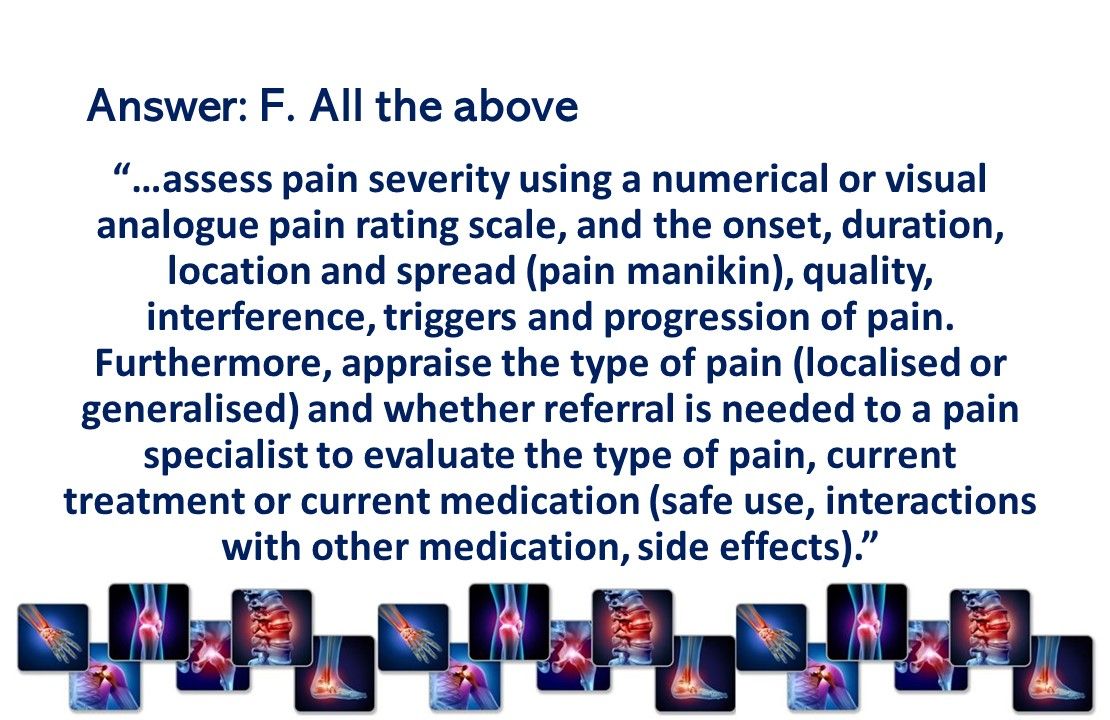
Answer: F. All the above. “…assess pain severity using a numerical or visual analogue pain rating scale, and the onset, duration, location and spread (pain manikin), quality, interference, triggers and progression of pain. Furthermore, appraise the type of pain (localised or generalised) and whether referral is needed to a pain specialist to evaluate the type of pain, current treatment or current medication (safe use, interactions with other medication, side effects).”
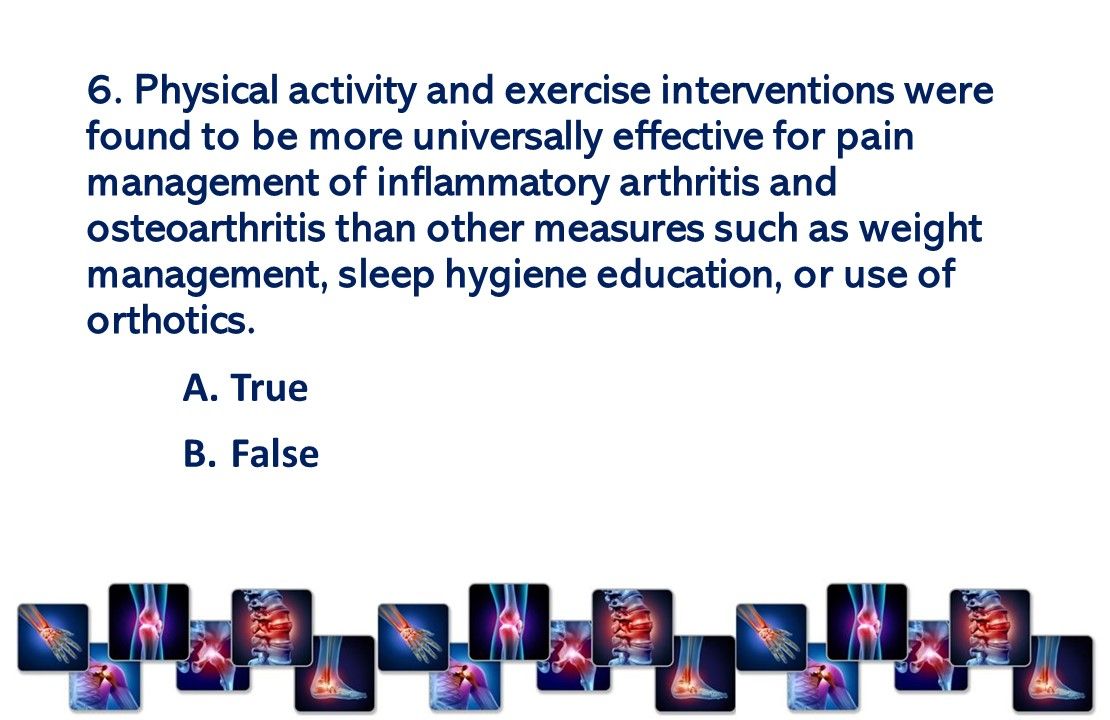
6. True or False: Physical activity and exercise interventions were found to be more universally effective for pain management of inflammatory arthritis and osteoarthritis than other measures such as weight management, sleep hygiene education, or use of orthotics.

Answer: A. True. “Effects on pain were most uniformly positive for physical activity and exercise interventions, and for psychological interventions. Effects on pain for educational interventions, orthotics, weight management and multidisciplinary treatment were shown for particular disease groups.”
Related Content:

